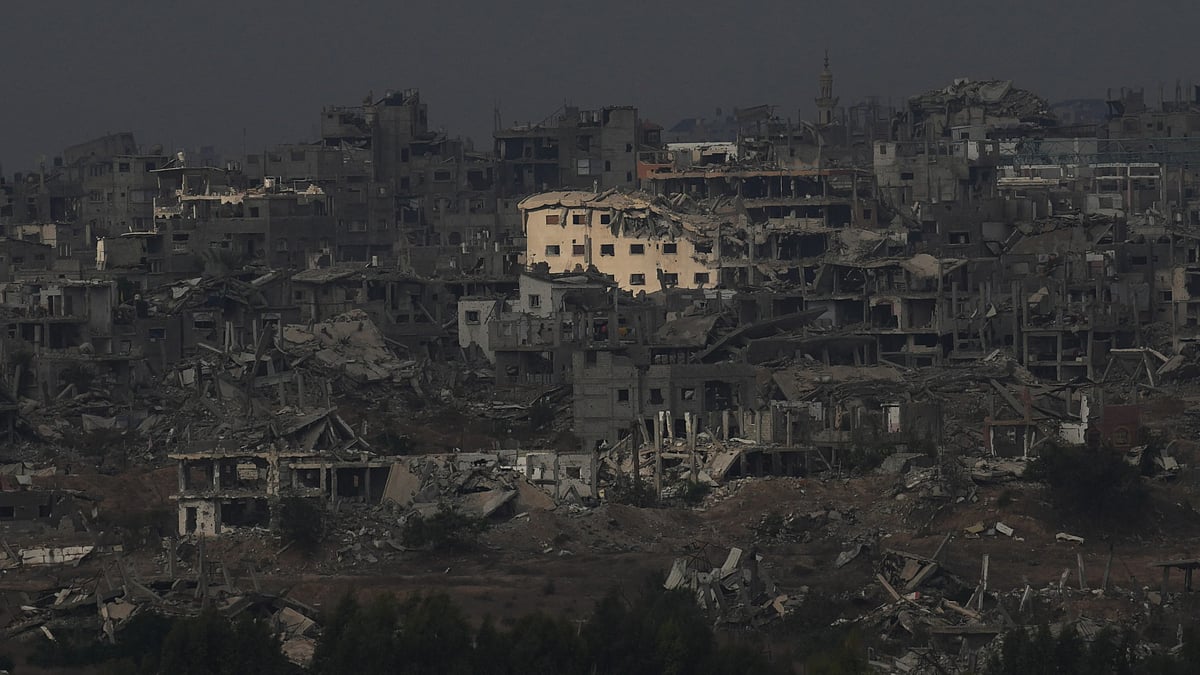World
Hamas returns two bodies as Gaza reels under renewed Israeli fire
Between Tuesday and Wednesday, Israeli strikes kill 104 people, including 46 children and 20 women, according to Gaza’s health ministry

In a somber gesture shrouded by smoke and sorrow, the Palestinian group Hamas has handed over two bodies it said belonged to deceased Israeli captives — even as Israel’s renewed assault tore through Gaza’s fragile calm, extinguishing what remained of a tenuous ceasefire, the Al Jazeera reported.
The Israeli prime minister’s office confirmed on Thursday that the remains, received via the Red Cross, were being transported for identification inside Israel. The handover came a day after air raids once again scarred the skies over the besieged enclave, ending a brief interlude of uneasy quiet.
Brokered by Washington in a last-ditch effort to still the guns of a two-year war, the truce had brought fleeting respite. Under its terms, Hamas released 20 living captives in exchange for nearly 2,000 Palestinian political prisoners. Israeli troops, for their part, withdrew from several dense urban zones.
But the calm proved tragically short-lived. Since the ceasefire took hold on 10 October, Israeli strikes have claimed dozens of lives — many of them women and children. From Tuesday into Wednesday alone, Gaza’s health ministry reported 104 deaths, including 46 children and 20 women, as fresh bombardments thundered across the strip.
Published: undefined
As part of the agreement, Hamas pledged to return the remains of all 28 Israeli captives, in exchange for the bodies of Palestinians killed during the war. By Thursday, 15 sets of remains had been handed over. Hamas officials said the search for others continues amid apocalyptic scenes — whole neighborhoods reduced to rubble, thousands still buried beneath collapsed concrete and dust.
“The group is pleading for heavy machinery to aid the retrieval of bodies,” reported Al Jazeera’s Tareq Abu Azzoum from central Gaza’s az-Zuwayda. “But Israel accuses Hamas of dragging its feet, of using grief as leverage.”
The dispute over the dead — a grim echo of the war’s unending cycle — has become a stumbling block in US President Donald Trump’s much-vaunted peace plan. Beyond the remains, thornier questions still loom: Who will govern Gaza? Will Hamas disarm? Can a land so long scarred by siege be stitched back together?
Even as such debates circle foreign capitals, Gaza’s night sky burns anew. Witnesses described Israeli warplanes launching at least ten strikes near Khan Younis before dawn, while tanks rumbled and shelled northern neighborhoods of Gaza City. The Israeli army said the attacks targeted “terrorist infrastructure” that threatened its troops on the ground.
Meanwhile, amid the ruins, a fragile lifeline of aid continues to trickle in. The United Nations reports that more than 24,000 tonnes of supplies have entered Gaza since the ceasefire began — a marked rise, though far from sufficient. The World Food Programme’s regional director, Samer Abdel Jaber, said his teams had managed to bring in 20,000 metric tons of food within 20 days, but warned that “the bottleneck lies in access, funding, and the absence of NGOs Israel still bars from entry.”
UN humanitarian coordinator Ramiz Alakbarov urged Israel to lift restrictions on civil groups, calling them “the heart of humanitarian work.” Yet, the call seems to echo unanswered across a landscape of ruin.
In the east of Gaza City, Israeli bulldozers continue to grind forward — demolishing homes in Tuffah and Shujayea. Residents say entire streets are being erased, leaving only dust, twisted metal, and silence in their wake.
For Gaza’s weary millions — displaced, dispossessed, and still grieving — the return of bodies feels like a cruel metaphor: fragments of the past delivered to a land where even the living remain entombed in war’s shadow.
Published: undefined
Follow us on: Facebook, Twitter, Google News, Instagram
Join our official telegram channel (@nationalherald) and stay updated with the latest headlines
Published: undefined